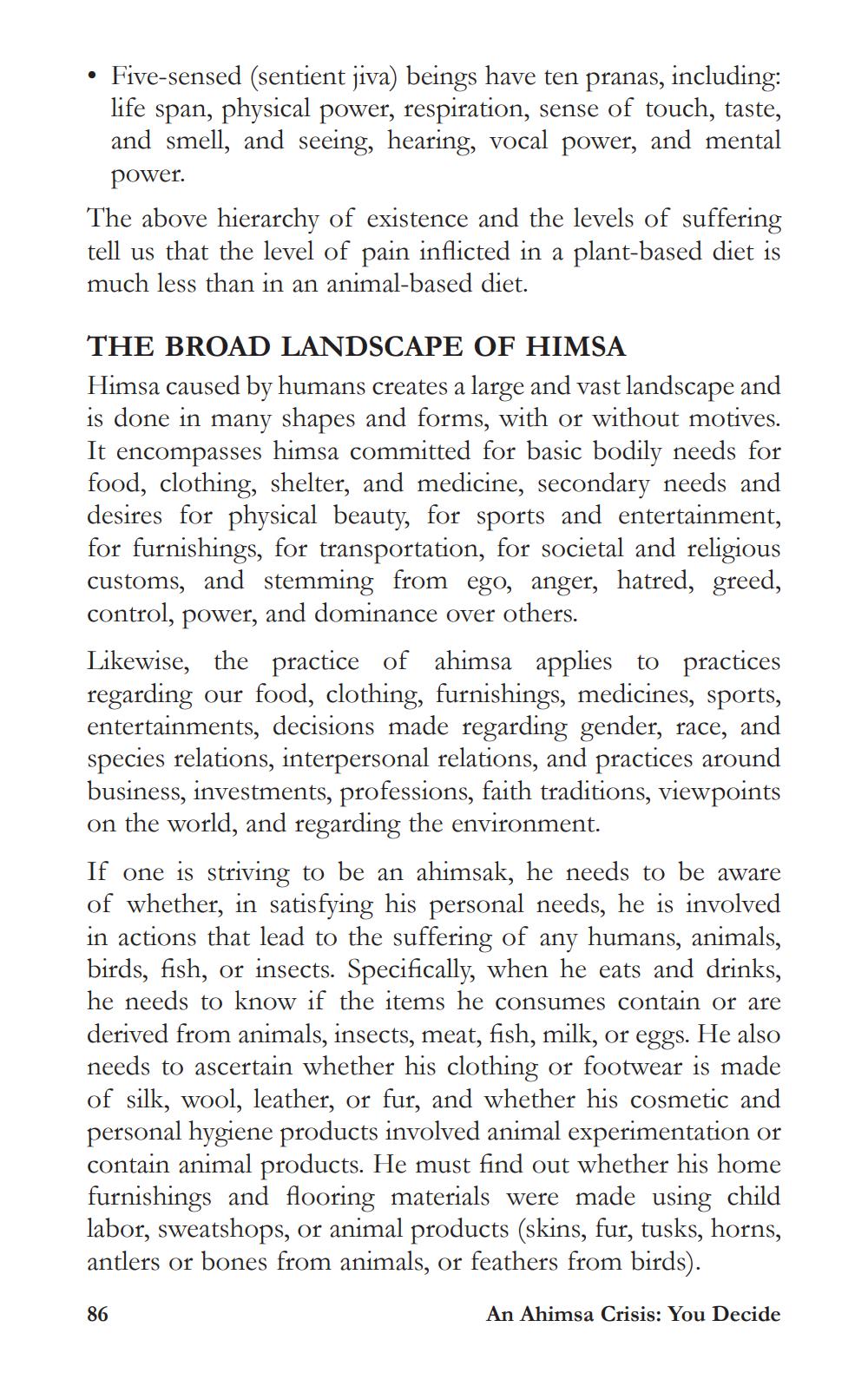________________
• Five-sensed (sentient jiva) beings have ten pranas, including:
life span, physical power, respiration, sense of touch, taste, and smell, and seeing, hearing, vocal power, and mental power. The above hierarchy of existence and the levels of suffering tell us that the level of pain inflicted in a plant-based diet is much less than in an animal-based diet.
THE BROAD LANDSCAPE OF HIMSA Himsa caused by humans creates a large and vast landscape and is done in many shapes and forms, with or without motives. It encompasses himsa committed for basic bodily needs for food, clothing, shelter, and medicine, secondary needs and desires for physical beauty, for sports and entertainment, for furnishings, for transportation, for societal and religious customs, and stemming from ego, anger, hatred, greed, control, power, and dominance over others. Likewise, the practice of ahimsa applies to practices regarding our food, clothing, furnishings, medicines, sports, entertainments, decisions made regarding gender, race, and species relations, interpersonal relations, and practices around business, investments, professions, faith traditions, viewpoints on the world, and regarding the environment. If one is striving to be an ahimsak, he needs to be aware of whether, in satisfying his personal needs, he is involved in actions that lead to the suffering of any humans, animals, birds, fish, or insects. Specifically, when he eats and drinks, he needs to know if the items he consumes contain or are derived from animals, insects, meat, fish, milk, or eggs. He also needs to ascertain whether his clothing or footwear is made of silk, wool, leather, or fur, and whether his cosmetic and personal hygiene products involved animal experimentation or contain animal products. He must find out whether his home furnishings and flooring materials were made using child labor, sweatshops, or animal products (skins, fur, tusks, horns, antlers or bones from animals, or feathers from birds).
86
An Ahimsa Crisis: You Decide




